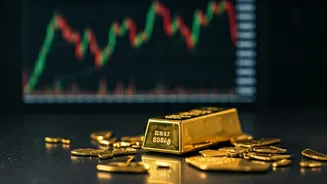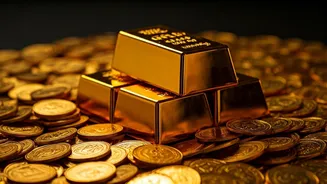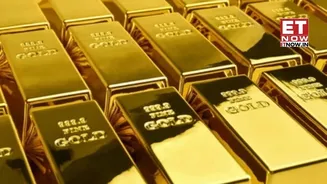Daily Price Fluctuations
Gold rates in India fluctuate daily, influenced by a multitude of global and local factors. These prices are often quoted per gram or per tola (a traditional
unit of weight), and they vary depending on the purity of the gold (e.g., 24 karat, 22 karat). Current rates are shaped by international market trends, including the performance of the US dollar, interest rate changes, and geopolitical events. Local factors such as the demand from festivals (like Dhanteras and Diwali) and the import duties also play a significant role. Tracking these prices involves monitoring financial news outlets, local jewellers, and online platforms specializing in market rates to remain updated on the latest trends and make informed decisions about buying or selling gold. The availability of real-time price data empowers consumers and investors alike to navigate the market effectively.
Global Market Impact
Several global influences directly affect gold prices in India. The strength of the US dollar significantly impacts gold prices, as gold is often priced in US dollars. When the dollar weakens, gold becomes more affordable for buyers using other currencies, which tends to increase demand and push prices upward. Conversely, a stronger dollar can make gold more expensive, potentially decreasing demand. The decisions made by the US Federal Reserve regarding interest rates are another critical factor; higher interest rates often make gold less attractive as an investment because they increase the returns available from other interest-bearing assets. Moreover, geopolitical events and economic uncertainties, such as global conflicts or recessions, can drive up gold prices as investors seek safe-haven assets. These factors collectively create a dynamic market environment for gold, requiring constant vigilance to understand price movements.
Domestic Market Factors
In India, the demand for gold is heavily influenced by cultural and festive seasons. Events like Dhanteras and Diwali witness a surge in gold purchases, driving up demand and often prices. The monsoon season also indirectly impacts gold prices, as good harvests can lead to increased disposable income among farmers, a significant segment of gold buyers. Additionally, import duties and taxes imposed by the Indian government directly affect the cost of gold. Higher import duties increase the final price, while changes in tax policies can influence consumer behavior. The rupee's exchange rate against the US dollar also plays a crucial role, as a weaker rupee makes imported gold more expensive. Understanding these domestic factors is crucial for anyone looking to invest in or purchase gold within India, as they contribute significantly to its price fluctuations and market dynamics.
Investment Avenues
Gold serves as a significant investment avenue for many Indians, often viewed as a hedge against inflation and economic uncertainty. Its value tends to remain stable or increase during times of financial instability, making it a safe asset. There are several ways to invest in gold, including physical gold (coins, bars, and jewelry), gold ETFs (Exchange Traded Funds), gold mutual funds, and Sovereign Gold Bonds (SGBs) issued by the government. Each option offers different advantages and risks. Physical gold provides tangible ownership but comes with storage costs and security concerns. Gold ETFs and mutual funds offer liquidity and diversification, while SGBs provide interest along with the potential for capital appreciation. Careful consideration of these different investment vehicles is crucial, depending on the investor’s risk tolerance, investment horizon, and financial goals. Consulting with financial advisors is a wise step before making significant investment decisions.
Practical Guidance
For those looking to buy or sell gold, several practical considerations should guide their actions. When purchasing gold, it's essential to verify the purity, often indicated by a hallmark, such as BIS (Bureau of Indian Standards) certification in India, to ensure the authenticity. Comparing prices from different jewelers and online platforms is advised to secure the best deal. Negotiating the price, especially for jewelry, can sometimes yield favorable results. When selling gold, gather relevant documentation, such as purchase receipts and certificates of authenticity, to establish its value. Be aware of the prevailing market rates and the current charges applicable to gold sales. Sell to reputable dealers to ensure fair valuation and transactions. Always check the gold rate on the day of sale, which could vary slightly between dealers. These practices support informed and secure transactions in the gold market.
Market Predictions
Predicting the future of gold prices involves examining multiple factors. Global economic forecasts, including inflation trends, interest rate policies, and geopolitical risks, will continue to play a crucial role. The Indian market's demand during festive seasons, the strength of the rupee, and government policies regarding import duties are also important. The long-term perspective suggests that gold may retain its role as a hedge against economic instability and a store of value. However, short-term fluctuations will likely persist, driven by market volatility. Staying informed about economic news, market trends, and expert opinions can equip investors with valuable insights to make informed decisions. Regular monitoring of both local and international developments is a strategic approach to navigating the complexities of the gold market. Consult with financial professionals for personalized guidance on investment strategies.













